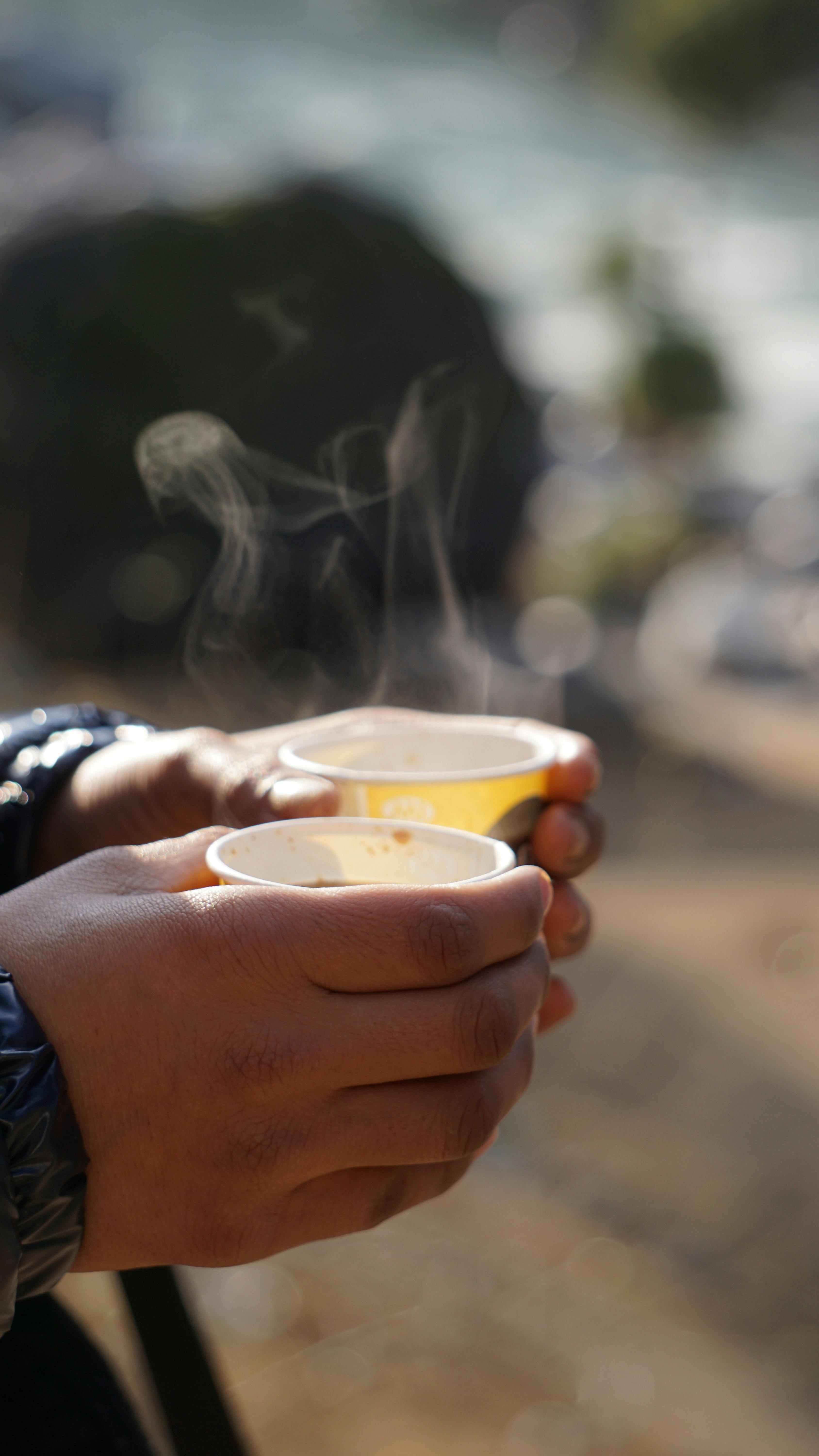So, you’ve probably heard of acupuncture and maybe even tried it yourself. But have you ever heard of cupping therapy? This ancient practice has been gaining popularity in recent years, thanks to its numerous potential health benefits. Cupping therapy involves creating a vacuum by placing cups on your skin, which helps to promote blood flow, reduce muscle tension, and relieve pain. In this article, we’ll take a closer look at cupping therapy and explore how it can improve your well-being.

What is Cupping Therapy?
Cupping therapy is an ancient practice that has been used for centuries in various cultures around the world, including Traditional Chinese Medicine, Middle Eastern traditions, and now even in Western medicine. It involves creating a vacuum inside special cups and placing them on specific areas of the body to promote healing and relieve pain. The cups can be made from different materials, such as glass, bamboo, or silicone. By creating suction on the skin, cupping therapy helps to stimulate blood flow, reduce inflammation, and promote relaxation.
History of Cupping Therapy
The history of cupping therapy can be traced back to ancient Egypt, China, and the Middle East. The earliest recorded use of cupping dates back to 1550 BC in an ancient Egyptian medical textbook called the Ebers Papyrus. In China, cupping therapy was mentioned in one of the oldest medical textbooks, the Huangdi Neijing, which dates back to around 300 BC. Over the centuries, cupping therapy has continued to be used in various forms across different cultures, with its techniques and applications evolving over time.
How Cupping Therapy Works
Cupping therapy works by creating a vacuum or suction on the skin. This suction is created either by heating the air inside the cup to create a vacuum (fire cupping) or by using a pump to remove the air from the cup (modern cupping). The cups are then quickly placed on the skin, and as the air inside the cup cools or is removed, it creates a suction effect that pulls the skin and underlying tissues into the cup. The cups can be left in place for a few minutes or moved around the body, depending on the specific technique being used.
Types of Cupping Therapy
There are several types of cupping therapy that can be used depending on the individual’s needs and preferences:
-
Dry Cupping: This is the most common form of cupping therapy, where the cups are placed on the skin without any additional treatment.
-
Wet Cupping: This involves creating small incisions on the skin before applying the cups. The suction helps to draw out a small amount of blood, which is believed to remove toxins from the body.
-
Fire Cupping: This traditional method involves heating the air inside a glass cup using a flame before placing it on the skin. The cooling air creates suction, pulling the skin into the cup.
-
Needle Cupping: This technique combines cupping therapy with acupuncture. Acupuncture needles are inserted into specific points on the body, and then cups are placed over the needles to create suction.
-
Massage Cupping: In this technique, oil is applied to the skin to allow the cups to glide smoothly over the body. The cups are moved in a rhythmic motion, providing a massage-like effect.
Each type of cupping therapy has its own unique benefits and may be used in combination with other techniques to provide holistic healing.

Benefits of Cupping Therapy
Cupping therapy offers a wide range of benefits for both physical and mental well-being. Some of the key benefits include:
Pain Relief
Cupping therapy has been found to be effective in reducing various types of pain, including muscle soreness, joint pain, and headaches. The suction created by the cups helps to increase blood flow to the affected area, which can alleviate pain and promote healing.
Promotes Relaxation
The gentle suction and massage-like effect of cupping therapy helps to relax the muscles and release tension. This can promote a sense of relaxation and reduce stress, helping to improve overall well-being.
Improves Blood Circulation
Cupping therapy helps to stimulate blood circulation in the body. The suction created by the cups helps to draw blood to the surface of the skin, improving circulation and delivering important nutrients and oxygen to the tissues.
Reduces Inflammation
Inflammation is a natural response by the body to injury or infection. However, chronic inflammation can lead to various health issues. Cupping therapy has been found to reduce inflammation by promoting lymphatic drainage and improving the body’s natural healing processes.
Boosts Immune System
Cupping therapy can help to strengthen the immune system by increasing the production of white blood cells, which are responsible for fighting off infections and diseases. The improved blood circulation and lymphatic drainage also help to remove toxins from the body, further supporting the immune system.
Relieves Respiratory Issues
Cupping therapy has been used for centuries to treat respiratory conditions such as asthma and bronchitis. The suction created by the cups helps to loosen phlegm and mucus, making it easier for the body to clear the airways and breathe more easily.
Aids Digestion
Cupping therapy is believed to improve digestion by stimulating the digestive organs and promoting the production of digestive enzymes. It can also help to relieve conditions such as constipation and bloating by improving bowel movements and reducing inflammation in the gastrointestinal tract.
Enhances Skin Health
Cupping therapy can improve the health and appearance of the skin. It helps to increase blood flow to the skin, which can promote a youthful complexion and help to heal various skin conditions such as acne, eczema, and cellulite.
Overall, cupping therapy offers a holistic approach to health and wellness, providing numerous benefits for both the body and mind.
Cupping Techniques
There are various cupping techniques that can be used depending on the desired outcome and individual needs. Some of the most commonly used cupping techniques include:
Dry Cupping
Dry cupping involves placing cups on the skin without any additional treatment or techniques. It is the most basic form of cupping therapy and can be used to address a wide range of health issues.
Wet Cupping
Wet cupping, also known as hijama, involves creating small incisions on the skin before applying the cups. The suction helps to draw out a small amount of blood, which is believed to remove toxins and promote healing.
Fire Cupping
Fire cupping is a traditional method that involves heating the air inside a glass cup using a flame before placing it on the skin. The cooling air creates suction, pulling the skin into the cup. Fire cupping is often used for deep tissue massage and to address muscular pain and tension.
Needle Cupping
Needle cupping combines cupping therapy with acupuncture. Acupuncture needles are first inserted into specific points on the body, and then cups are placed over the needles to create suction. This technique combines the benefits of cupping and acupuncture, providing a powerful healing effect.
Massage Cupping
Massage cupping involves applying oil to the skin to allow the cups to glide smoothly over the body. The cups are moved in a rhythmic motion, providing a massage-like effect. This technique is often used to relieve muscle tension, improve circulation, and promote relaxation.
Each cupping technique can be tailored to the individual’s needs and preferences, providing a customized approach to healing and well-being.

Procedure of Cupping Therapy
The procedure of cupping therapy typically involves several steps, including preparation, application of the cups, duration of treatment, and aftercare.
Preparation
Before starting the cupping therapy session, the therapist will discuss your medical history, current health concerns, and any specific areas you want to address. They may also ask about your pain tolerance and preferences. It is important to disclose any health conditions, medications, or allergies to ensure the safety and effectiveness of the treatment.
Application of Cups
The therapist will apply oil or a similar lubricant to your skin to create a seal between the cups and your body. They will then use a pump or flame (depending on the technique) to create suction inside the cups and quickly place them on the desired areas of your body. The cups may be left in place for a few minutes or moved around in a massage-like motion.
Duration of Treatment
The duration of cupping therapy treatment can vary depending on the individual’s needs and preferences. A typical session can last anywhere from 15 to 30 minutes. However, some sessions may be shorter or longer, depending on the specific technique being used and the areas being treated.
Aftercare
After the cupping therapy session, it is important to take care of your body to optimize the healing process. The therapist may recommend avoiding exposure to extreme temperatures, such as hot baths or cold showers, immediately after the treatment. It is also advisable to drink plenty of water to stay hydrated and support the body’s natural detoxification processes. The therapist may provide additional aftercare instructions based on your specific needs.
Potential Side Effects
While cupping therapy is generally safe, there are potential side effects that you should be aware of. These side effects are typically temporary and subside within a few days. Some of the common side effects include:
Temporary Skin Discoloration
One of the most noticeable side effects of cupping therapy is temporary skin discoloration. This can range from light redness to dark purple or even black marks, depending on the intensity and duration of the suction. These marks are not bruises but rather a result of increased blood circulation and should fade over time.
Soreness
After cupping therapy, it is common to experience soreness or tenderness in the areas where the cups were applied. This is similar to the feeling after a deep tissue massage and is a sign that the therapy has activated the body’s healing response.
Blisters
In some cases, cupping therapy may cause blisters, especially if the cups are left in one place for too long. While this is relatively rare, it is important to monitor your skin during and after the treatment. If you notice any blisters, it is recommended to seek professional advice.
Infection
There is a small risk of infection with cupping therapy, especially if the cups are not properly sterilized or if the skin is not cleaned before the treatment. It is important to ensure that the cups and the treatment area are kept clean and hygienic to minimize this risk.
It is always advisable to consult a certified cupping therapist and discuss any concerns or potential side effects before undergoing the treatment.
Conditions Treated by Cupping Therapy
Cupping therapy has been used to address a wide range of health conditions. Some of the common conditions treated by cupping therapy include:
Muscle Pain and Stiffness
Cupping therapy can be effective in relieving muscle pain and stiffness caused by tension, injuries, or overexertion. The suction created by the cups helps to increase blood flow and loosen tight muscles, promoting relaxation and reducing pain.
Back and Neck Pain
Cupping therapy is often used to address back and neck pain, including conditions such as sciatica, herniated discs, and muscle strains. The therapy helps to improve blood circulation, reduce inflammation, and release tension in the muscles and connective tissues.
Migraines and Headaches
Cupping therapy has been found to provide relief for migraines and headaches by reducing muscle tension, improving blood flow, and promoting relaxation. The therapy can be applied to specific points on the head, neck, and shoulders to target the root cause of the headaches.
Sports Injuries
Cupping therapy is commonly used to treat sports injuries such as sprains, strains, and muscle tears. The therapy helps to reduce pain and inflammation, improve flexibility, and speed up the healing process. It is often used in combination with other techniques such as physical therapy or chiropractic care for optimal results.
Fibromyalgia
Fibromyalgia is a chronic condition characterized by widespread musculoskeletal pain, fatigue, and sleep disturbances. Cupping therapy has been found to provide relief for fibromyalgia symptoms by reducing pain, improving sleep quality, and promoting relaxation.
Arthritis
Cupping therapy can help to alleviate the pain, stiffness, and inflammation associated with various types of arthritis, including osteoarthritis and rheumatoid arthritis. The therapy helps to improve blood flow, reduce inflammation, and promote joint mobility.
Allergies and Asthma
Cupping therapy can be used to treat allergies and asthma by reducing inflammation, improving respiratory function, and promoting relaxation. The therapy helps to loosen phlegm and mucus, making breathing easier and relieving allergy symptoms.
Cupping therapy is a versatile treatment that can be customized to address a wide range of conditions, providing relief and promoting overall well-being.
Research and Evidence
Scientific studies on cupping therapy have been conducted to evaluate its effectiveness and safety. While more research is needed, several studies have shown promising results and demonstrated the potential benefits of cupping therapy.
Scientific Studies on Cupping Therapy
A study published in the Journal of Traditional and Complementary Medicine found that cupping therapy was effective in reducing pain and improving physical function in patients with chronic neck pain. Another study published in the Journal of Alternative and Complementary Medicine reported that cupping therapy reduced pain and improved quality of life in patients with chronic low back pain.
Effectiveness of Cupping Therapy
A systematic review and meta-analysis published in the Journal of Acupuncture and Meridian Studies concluded that cupping therapy was effective in treating various types of pain, including musculoskeletal pain, headache, and dysmenorrhea. The review also found that cupping therapy was safe and well-tolerated by patients.
Placebo Effect and Cupping Therapy
There is ongoing debate about the role of the placebo effect in cupping therapy. Some argue that the benefits of cupping therapy are primarily due to the placebo effect, while others suggest that the therapy has physiological effects that go beyond placebo. More research is needed to understand the mechanisms of action and potential placebo effect in cupping therapy.
Safety and Risks of Cupping Therapy
Overall, cupping therapy is considered safe when performed by a trained and certified therapist. However, there are potential risks and contraindications that should be considered. Individuals who are pregnant, have a bleeding disorder, or have certain skin conditions should avoid cupping therapy. It is important to consult a healthcare professional before undergoing cupping therapy to ensure its safety and appropriateness for your specific condition.
Cultural Significance of Cupping Therapy
Cupping therapy has deep cultural significance in various traditions and has been an integral part of healthcare practices for centuries.
Traditional Chinese Medicine
In Traditional Chinese Medicine (TCM), cupping therapy is used to balance the flow of Qi (energy) in the body and maintain overall health. Cupping therapy is often combined with other TCM techniques such as acupuncture, herbal medicine, and dietary therapy to provide a holistic approach to healing.
Eastern and Middle Eastern Traditions
Cupping therapy is also widely practiced in Middle Eastern and other Eastern cultures. It is often used to treat a variety of health conditions and is deeply rooted in the cultural heritage and traditional healing practices of these regions.
Modern Integration in Western Medicine
In recent years, cupping therapy has gained recognition and popularity in Western medicine. It is now being integrated into complementary and alternative medicine practices and is often offered alongside conventional medical treatments. Many healthcare professionals now acknowledge the potential benefits of cupping therapy and include it as part of their treatment plans.
Finding a Certified Cupping Therapist
To ensure the safety and effectiveness of cupping therapy, it is important to find a certified cupping therapist. Here are some tips to help you find a qualified practitioner:
Valid Certifications and Training
Look for a cupping therapist who has received proper training and holds valid certifications from reputable organizations. Check if they have completed courses or workshops specifically focused on cupping therapy.
Referrals and Recommendations
Ask for referrals or recommendations from friends, family, or healthcare professionals who have undergone cupping therapy. Hearing about their firsthand experiences can help you find a trusted and experienced practitioner.
Checking Professional Associations
Check if the cupping therapist is a member of professional associations or organizations related to cupping therapy. Membership in these associations demonstrates a commitment to professional growth and adherence to ethical standards.
Credential Verification
It is advisable to verify the credentials of the cupping therapist by contacting the certifying organization or checking their website. This will help you confirm their qualifications and ensure that they have met the necessary requirements.
Take the time to research and find a certified cupping therapist who aligns with your needs and preferences. A qualified practitioner will be able to provide safe and effective cupping therapy tailored to your specific condition.
Conclusion
Cupping therapy is an ancient practice with a long history of use in various cultures around the world. It offers a wide range of benefits for both physical and mental well-being, including pain relief, relaxation, improved blood circulation, reduced inflammation, and enhanced immune function. Cupping therapy can be customized to address specific conditions, making it a versatile treatment option. It is important to find a certified cupping therapist to ensure the safety and efficacy of the treatment. With its deep cultural significance and increasing integration in Western medicine, cupping therapy continues to evolve and provide holistic healing for individuals seeking alternative treatment options.
